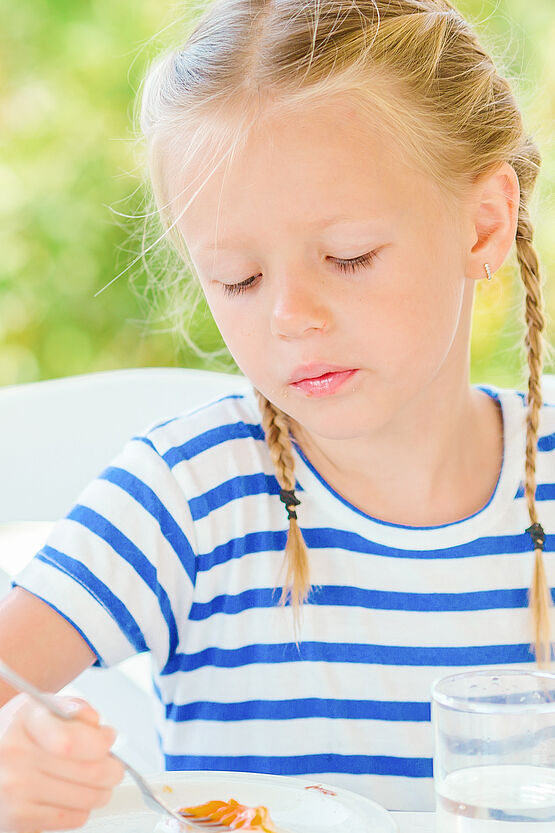
Biegunka
Biegunka, definiowana jako występowanie więcej niż trzech luźnych lub płynnych stolców dziennie, jest jednym z najczęstszych problemów zdrowotnych dotykających dzieci na całym świecie.
This is a test - Link TEST (Add Banner will only appear once, saved in the cache if clicked away)
The information on this part of the website is intended only for health care professionals.I am an expert within the meaning of Act No. country xy. I herewith confirm that I am a professional according to this definition.
Unfortunately, as you are not a health care professional we cannot provide you this information.
When travelling, we want to enjoy the time we have off, not spend our days sitting on the toilet or lying in bed. Unfortunately, travellers' diarrhoea can put a spoke in our wheel and spoil an expensive and eagerly awaited holiday.We used to think that traveller's diarrhoea was only caused by a change in the water, spicy foods, or too much sun, but not anymore. | Researchers have found that a specific type of bacteria is commonly to blame for travellers' diarrhoea - Enterotoxigenic Escherichia coli. These bugs colonize in the upper intestine, producing toxins that make us feel sick. They also cause fluids and electrolytes to be secreted in a watery stool electrolytes (minerals like sodium and potassi- um that help regulate many body functions) – ruining our plans to relax on the beach, visit a museum, or eat out in an exotic restaurant. |



The risk varies depending on the region we are travelling to. The more tropical and less developped the region is the higher the risk for traveler’s diarrhoea.
The simplest guide on how to prevent travel diarrhoea is „cook, boil, peel or just leave it”. In some regions, travellers should make sure to use bottled or boiled water to brush the teeth. Travellers should also avoid ice cubes in drinks in tropical countries. Vegetables should be cooked, fruits peeled. Besides, one of the most important hygiene habits is to wash the hands after each visit to the restroom.
Lactic acid bacteria such as L. reuteri DSM 17938 (Protectis) may support you staying healthy during your trip.

Most travellers will experience symptoms for two to four days – these can also include abdominal pain, cramps, excess wind, nausea, fatigue, loss of appetite, vomiting, fever, and dehydration.
Very common is watery diarrhoea, sometimes accompanied by vomiting and fever below 39C. So, those suffering should replace lost fluids and electrolytes by drinking more liquids (sealed or purified beverages only). Oral rehydration salts (ORS) can help the body to rehydrate more quickly.
Supplementing the gut flora with BioGaia drops or tablets containing Limosilactobacillus reuteri Protectis could also help by rebalancing the microbiota, improving symptoms and speeding up recovery.


In addition to the steps above, probiotics such as Limosilactobacillus reuteri Protectis may help hold off travellers’ diarrhoea during a trip.
By supplementing the gut microflora two weeks before the journey, the body can get fit for travel by building up the number of endogenous bacteria in the gastrointestinal tract. Continuing to supplement with probiotics during the trip further supports microflora colonization – keeping holiday-goers happy during their travels.
with Limosilactobacillus reuteri Protectis contains mineral salts in an osmolality according to recommendation of the WHO and zinc and is quickly resorbed by the body to restore the balance of salts and fluids. Supplemen- ting zinc is needed during acute diarrhoea. Therefore, WHO and UNICEF recommend using zinc in per oral hydration in the case of children.
Acute Phase: During acute travellers’ diarrhoea take 1 chewable tablet or 5 drops 2 times per day.
For Rehydration: To restore the balance of salts and fluids in case of acute diarrhoea use BioGaia ORS stir- ring 1 sachet into 250 ml safe water.
Before the journey: for supplementing your intestinal micro flora start 2 weeks before your journey with 1 chewable tablet or 5 drops daily.
genic intruders.

Biegunka, definiowana jako występowanie więcej niż trzech luźnych lub płynnych stolców dziennie, jest jednym z najczęstszych problemów zdrowotnych dotykających dzieci na całym świecie.

Jeśli dziecko cierpi na biegunkę lub wymioty, powinno przyjmować leki tylko na receptę lekarza. Rodzice mogą jednak podjąć kroki w celu przywrócenia równowagi flory jelitowej dziecka, uzupełniając ją kroplami lub tabletkami BioGaia.

Choć biegunka może być nieprzyjemna, to jest coś, czego dorośli doświadczyli przynajmniej raz. Dbanie o mikroflorę jelitową jest ważnym elementem domowej opieki nad biegunką.